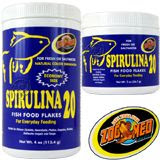Spirulina as Fish Food; Fertilizers
This post is extracted from the Yahoo Groups: Spirulina-Group and is in the format of question and answers.
QUESTION:
I intend to recycle fish waste as nutrient to grow spirulina and in turns to feed the fish with the spirulina. I needed help on following: (Have read all previous messages but could not find the answer.)
•I culture tilapia in RAS (Recirculating Aquaculture Systems). Do I need to add other chemicals as nutrient. If yes, what are these and how much? I assume that I need to add calcium bicarbonate to increase the pH to 10. I should be using a 6m x 3m x 4m tank for the spirulina.
•How to determine sufficiency of these waste and chemical?
•Can I drip spirulina water into the fish tank directly allowing the fish to eat the fresh spirulina?
•Is there a problem if add the fish waste water directly to spirulina tank?
•How to get the spirulina seed?
Thank you.
ADVERTISEMENT:
ANSWER:
I think, you should add others chemical such as: NPK (Nitrogen/Phosphorus/Potassium)and TSP (Triple Superphosphate) fertilizer to grow spirulina faster beside bicarbonate.
Bicarbonate as a buffer I use to maintain the pH alteration. NPK and TSP are useful for macronutient of Spirulina growth.
I cultured Spirulina on fresh water with the main composition:
bicarbonate (NaHCO3) 10 grams per Liter
NPK 1-18 grams per Liter
TSP 1-2 grams per Liter
After cultivating about 14-28 days you can harvest it by nylon cloth.
Its better, rinse it with fresh and clean water to reduce some non organic material; 2-3 times, then you can add to the tilapia culture.
Spirulina is high protein content algae, so it's very good as a feed.
NPK RECIPIES, PRODUCTS
*Recipies:
*from How to Make a Complete Organic Fertilizer
•4 parts seed meal
•1 part dolomite lime
•½ part bone meal -or- 1 part soft rock phosphate
•½ part kelp meal
*homemade Fish/Seaweed Emulsion
*Products:
*All Natural Organic Fertilizer Concentrate, 3-1.5-2 NPK
A FEW SOURCES FOR NPK FERTILIZERS
Nitrogen Fertilizers:
*Potassium nitrate (13% N) is used as both a K source and a N source
*Ammonium nitrate (33% N) although a popular source in the past, it has storage problems associated with fire and explosive hazards (as well can raise be difficult to obtain due to "Red Flags" raised because of these hazards)
*Urea (46% N) is the most widely used dry N fertilizer. Once added, urea is converted to ammonia.
Phosphate Fertilizers:
*Diammonium phosphate (18-46-0) is a dry source of Phosphate. It has the advantage of being highly water soluble, having a high analysis and often a price advantage. Diammonium phosphate has an acid effect and thus buffers may need to be increased to maintain pH in Spirulina Cultures.
Potassium Fertilizers:
*Potassium Chloride (60 to 62% K2O), also referred to as muriate of potash. Excellent for use in blending of mixed fertilizers.
*Potassium nitrate (44% K2O), also known as nitrate of potash, this version of Potassium is generally not cost effective for many applications.
USEFUL RESOURCES:
*Purchase LED Lighting; an easy to understand article that frankly cuts through all the crap information surrounding LED Lighting for growing aquatic plants, corals.
*Are UV Sterilizers Good for an Aquarium?
*Aquarium LED Warranties; Reef or Planted
*St Marys College Biology LED Experiments
Labels: ammonia, Ammonium nitrate, Fertilizer, Fish Food, HBH, Nitrogen, ph, phosphate, RAS, Spirulina, spirulina seed, tilapia, urea, waste




